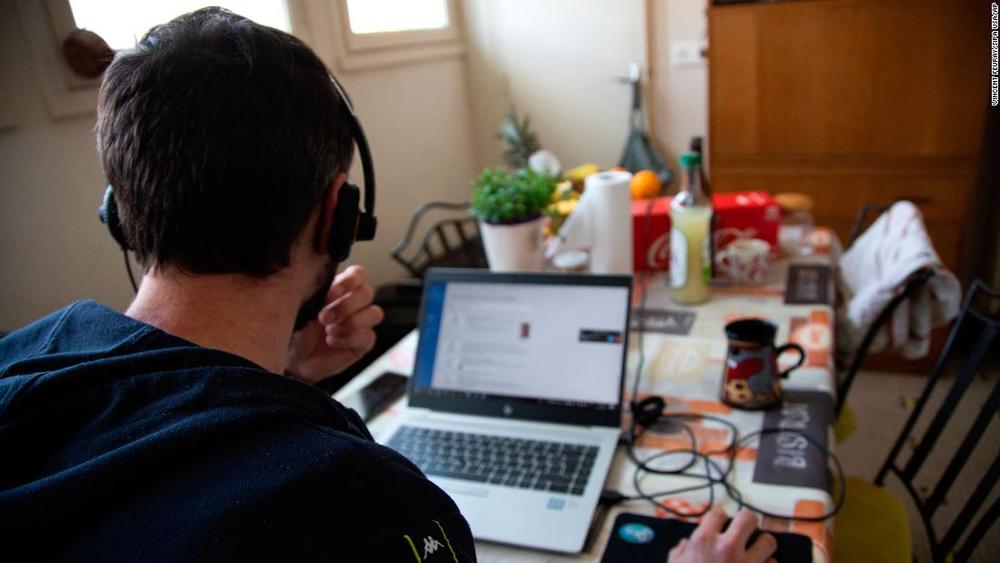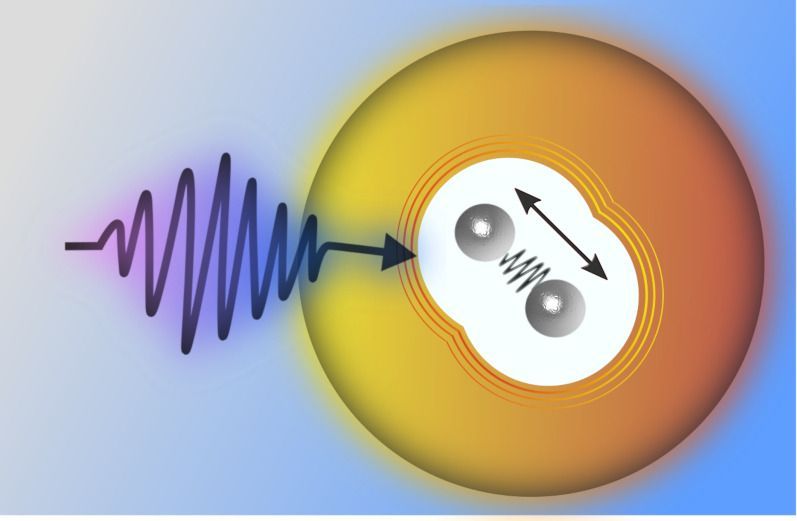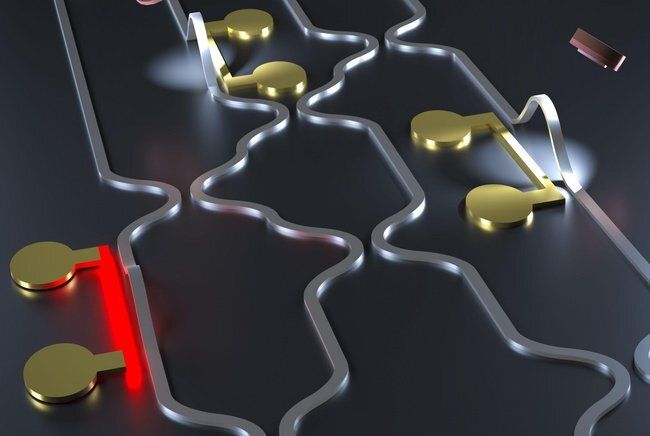Egyptian blue is one of the oldest manmade colour pigments. It adorns, for instance, the crown of the world famous bust of Nefertiti.



“Infusions of antibody-laden blood have been used with reported success in prior outbreaks, including the SARS epidemic and the 1918 flu pandemic.”
John Hopkins University
With a vaccine for COVID-19 still a long way from being realized, Johns Hopkins immunologist Arturo Casadevall is working to revive a century-old blood-derived treatment for use in the United States in hopes of slowing the spread of the disease.
With the right pieces in place, the treatment could be set up at Johns Hopkins University in Baltimore within a matter of weeks, Casadevall says.
The technique uses antibodies from the blood plasma or serum of people who have recovered from COVID-19 infection to boost the immunity of newly infected patients and those at risk of contracting the disease. These antibodies contained in the blood’s serum have the ability to bind to and neutralize SARS-CoV-2, the virus that causes COVID-19. Casadevall—a Bloomberg Distinguished Professor of molecular microbiology and immunology and infectious diseases at the Johns Hopkins Bloomberg School of Public Health and School of Medicine—published a paper on the proposal today in The Journal of Clinical Investigation.
Good Science here. A Covid-19 Primer.
Wash your hands.
Ninja Nerds.
What is Corona virus? What is COVID-19? Coronaviruses (CoV) are a large family of viruses that cause illness ranging from the common cold to more severe diseases such as Middle East Respiratory Syndrome (MERS-CoV) and Severe Acute Respiratory Syndrome (SARS-CoV). Coronavirus disease (COVID-19) caused by SARS-COV2 is a new strain that was discovered in 2019 and has not been previously identified in humans.
Coronaviruses are zoonotic, meaning they are transmitted between animals and people. Detailed investigations found that SARS-CoV was transmitted from civet cats to humans and MERS-CoV from camels to humans. Several known coronaviruses are circulating in animals that have not yet infected humans. It is believed that COVID-19 was transmitted from pangolin to humans (current theory).
Common signs of infection include respiratory symptoms, fever, cough, shortness of breath and breathing difficulties. In more severe cases, infection can cause pneumonia, severe acute respiratory syndrome, kidney failure and even death (WHO, 2020).
Ninja Nerd Lectures has compiled the most up to date and recent data on COVID-19 as of March 15, 2020. Please follow along with this lecture to understand the origin and zoonosis of COVID-19, the routes of transmission, epidemiology (current as of 3/15/2020), pathophysiology, and diagnostic tests used to identify COVID-19.
As new information and research is published we will continue to provide updates on COVID-19 and ensure all of our viewers are kept up to date on the most recent data.
SUPPORT US! paypal.me/ninjanerdscience
REFERENCES: World Health Organization (WHO), Centers for Disease Control and Prevention (CDC).

As they increasingly log on from home, Americans are having to meld their personal technology with professional tools at unprecedented scale. For employers, the concern isn’t just about capacity, but also about workers introducing new potential vulnerabilities into their routine — whether that’s weak passwords on personal computers, poorly secured home WiFi routers, or a family member’s device passing along a computer virus.
The dramatic expansion of teleworking by US schools, businesses and government agencies in response to the coronavirus is raising fresh questions about the capacity and security of the tools many Americans use to connect to vital workplace systems and data.
At one major US agency, some officials have resorted to holding meetings on iPhone group calls because the regular conference bridges haven’t always been working, according to one federal employee. But the workaround has its limits: The group calls support only five participants at a time, the employee noted.
“Things have worked better than I anticipated, but there are lots of hiccups still,” said the employee, who spoke on condition of anonymity because he is not authorized to speak on the record.

O.o yayyyyyyyyyyyyy.
When it comes to space, there’s a problem with our human drive to go all the places and see all the things. A big problem. It’s, well, space. It’s way too big. Even travelling at the maximum speed the Universe allows, it would take us years to reach our nearest neighbouring star.
But another human drive is finding solutions to big problems. And that’s what NASA engineer David Burns has been doing in his spare time. He’s produced an engine concept that, he says, could theoretically accelerate to 99 percent of the speed of light — all without using propellant.
He’s posted it to the NASA Technical Reports Server under the heading “Helical Engine”, and, on paper, it works by exploiting the way mass can change at relativistic speeds — those close to the speed of light in a vacuum. It has not yet been reviewed by an expert.

Trapping a molecule inside a liquid helium nanodrop allows clean measurements of the molecule’s vibrations.
The solvent in which a molecule is suspended can strongly influence the molecule’s motion. Now researchers have demonstrated that a molecule dissolved inside a superfluid helium nanodrop experiences very little effect from the solvent. The researchers measured, with femtosecond resolution, the intramolecular vibrations of an indium dimer (In2) in a helium nanodrop. They say that their method could be used to study molecules relevant for light-harvesting technologies, such as solar cells, that have been difficult to observe because of solvent effects.

Modern society relies on technologies with electronic integrated circuits (IC) at their heart, but these may prove to be less suitable in future applications such as quantum computing and environmental sensing. Photonic integrated circuits (PICs), the light-based equivalent of electronic ICs, are an emerging technology field that can offer lower energy consumption, faster operation, and enhanced performance. However, current PIC fabrication methods lead to large variability between fabricated devices, resulting in limited yield, long delays between the conceptual idea and the working device, and lack of configurability. Researchers at Eindhoven University of Technology have devised a new process for the fabrication of PICs that addresses these critical issues, by creating novel reconfigurable PICs in the same way that the emergence of programmable logic devices transformed IC production in the 1980s.
Photonic integrated circuits (PICs) – the light-based equivalent of electronic ICs—carry signals via visible and infrared light. Optical materials with adjustable refractive index are essential for reconfigurable PICs as they allow for more accurate manipulation of light passing through the materials, leading to better PIC performance.
Current programmable PIC concepts suffer from issues such as volatility and/or high optical signal losses—both of which negatively affect a material’s ability to keep its programmed state. Using hydrogenated amorphous silicon (a-Si: H), a material used in thin-film silicon solar cells, and the associated Staebler-Wronski effect (SWE), which describes how the optical properties of a-Si: H can be changed via light exposure or heating, researchers at Eindhoven University of Technology have designed a new PIC fabrication process that addresses the shortfalls of current techniques and could lead to the emergence of universal programmable PICs.

Essentially this can lead to euclidean geometry in programming essentially allowing near infinite decompression either in programming or in devices or even spaceships.
In physics and mathematics, in the area of vector calculus, Helmholtz’s theorem,[1][2] also known as the fundamental theorem of vector calculus,[3][4][5][6][7][8][9] states that any sufficiently smooth, rapidly decaying vector field in three dimensions can be resolved into the sum of an irrotational (curl-free) vector field and a solenoidal (divergence-free) vector field; this is known as the Helmholtz decomposition or Helmholtz representation. It is named after Hermann von Helmholtz.[10]
As an irrotational vector field has a scalar potential and a solenoidal vector field has a vector potential, the Helmholtz decomposition states that a vector field (satisfying appropriate smoothness and decay conditions) can be decomposed as the sum of the form − ∇ ϕ + ∇ × A {\displaystyle -\nabla \phi +\nabla \times \mathbf {A} }, where ϕ {\displaystyle \phi } is a scalar field called “scalar potential”, and A is a vector field, called a vector potential.

[en] In order to continue cold nuclear fusion reaction reliably and easily, gases of deuterium or deuterium compounds are introduced to a plasma reaction vessel and electric energy is applied to convert the gases into plasmas. Further, deuterium ions are attracted to the surface of materials which cause nuclear fusion by an electric field which is negatively self-biased or externally biased. Atomic deuterium collides against the surface of a cathode on the side of palladium to cause nuclear fusion reaction at the surface or the vicinity of the inside of the cathode. Since a metal absorbing a great amount of deuterium is used as the material for the cathode in order to improve the efficiency and the absorption is increased at a low temperature, the cathode is cooled by liquid hydrogen. Further, the deuterium is introduced in the form of blowing so as to increase the absorption of the deuterium. When the scale is increased by 10 to 1000 times, practical fusion reaction can be caused to utilize as a controllable energy source which can provide a remarkable industrial effect. (N.H.)
Primary Subject